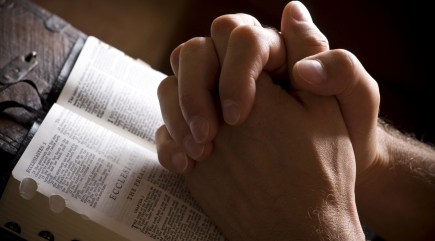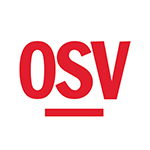
Renewing the Passion
Supporting the Vocational Calling of Catholic High School Teachers
New Initiatives
Catholic Curriculum Design: Catholic Education Across the Curriculum
May 07 2013

Suppose some aspect of Catholic spirituality was found in every course taught throughout your school. Suppose you could give teachers a very simple and concrete way to do so. Suppose every course provided students with a way to connect the content of course with an aspect of our Catholic faith. Suppose you could tell parents that your school infuses Catholic education across the curriculum. Would all of these Catholic elements enhance the school's mission and identity? Would it enhance the educational experience of students? Would your school be more attractive to parents?
At St. Charles High School in LaPlace, Louisiana, we have been working on infusing Catholic education across the curriculum for nine years. It all began as part of our accreditation self-study as we considered how we could develop a sense of Catholic identity amongst our students.
You may wonder exactly how teachers outside the Religion Department can do this without detracting from the rigor of their own subject matter. Fortunately it is not about asking teachers to add teaching religion to their already crowded curriculum. It is about inviting teachers to use religious reflection to teach the curriculum they are already responsible for. Teachers may not have the depth of knowledge of Catholic catechesis that the religion teacher may have, but religious reflection is a natural gift that can be used to apply the curriculum of all subjects to the truth of our faith and vice versa.
To use a cooking analogy, it is more like adding Catholic seasoning to the dish that teachers already serve.
It has always been the tradition of our Catholic faith to teach everything in God’s creation with the Creator in mind. The core subjects of Western education—math, science, language arts and social studies—owe their place in our world today to the educational traditions of the Catholic Church.
Out of the Church’s application of analytical and deductive reasoning to solve centuries of theological questions, especially in the works of Saint Thomas Aquinas, have come the skills for developing the sciences that characterize the modern age. The Catholic Church has always held that reason is a gift to faith. Doing religious thinking in all subjects across the curriculum may seem new to many of us, but it has actually been the accepted practice of our Catholic faith all along.
We decided a good place to start would be to include a religious thinking question on each school exam. At first, I provided teachers with these questions. Now they are creating these questions themselves. These questions ask students to reflect upon their course curriculum as it relates to any of these three areas: the Word of God, the worship of God, or works of the Christian life.
With Word of God questions, teachers of such subjects as language arts, math, science, social studies, the arts, and physical education are helping learners to embrace the mystery and wonder of God as they affirm and enrich the understanding of Scripture, dogma, Church doctrine, and Creation.
For example, in an English literature class, a teacher asked, “How is the human journey of faith (CCC 163) being described in the novel The Old Man and the Sea?” A math teacher asked students to “Describe a math concept that also describes a characteristic or quality of God.” While teaching grammar, a teacher asked, “How can the rules for writing a complete sentence be used as a description of God?”
Sometimes these questions integrate several subject areas, e.g.: “Describe the similarities of God using the periodic table as his paint palette for creation to a master painter’s use of the paint palette to create a great work of art.”
The worship of God questions has students consider their subject’s correlation to the liturgical, sacramental, and prayerful life of the Church. Here are some examples of how teachers in different disciplines brought faith to their lessons:
- An American history teacher required students to create a prayer service in remembrance of the American Civil War and the end of slavery.
- A science teacher asked, “How is the Mass played out in the life cycle of a star?” (CCC 1324)
- Another science teacher asked, “How does physics express the liturgical journey of the universe?”
- A math teacher asked students, “How does learning or doing math correlate with learning or doing prayer?”
- An English teacher had students read Song of Songs and then asked, “If the cannon of Sacred Scripture—books of the Bible—were being decided on today, what works of literature from around the world do you think God would want to include to inspire the People of God to fulfill the Gospel and the mission of Jesus?”
- On a grammar test, one question asked, “How would your prayer life and your worship on Sundays be affected if the concept of a “.” (period punctuation mark) have never been invented?”
- A health and physical education teacher asked, “What does it mean to you that your body is the temple of the Holy Spirit?” And, “How do you praise God by taking care of the health of your body?”
- The question “What form of art helps your prayer and life of worship best?” touches not just art, but music and dance.
When considering works of faith, students are reflecting on the moral and ethical questions surrounding the subject of study:
- In the study of world history, students were asked, “As Christians, what is the problem with historians and society in general referring to someone who is responsible for the deaths, enslavement, and oppression of millions of people on the planet as ‘Great,’ as in Alexander the Great?”
- The arts offered this reflection, “How do the disciplines of creating art, music, or dance offer us guidance to living the life of a Christian?”
- In physical education class, this question was posed: “How is our health be considered a matter of Christian justice for the planet?”
- A math teacher asked, “What mathematical principle or concept could be used to support a moral or ethical principle given to us by Jesus?”
- A science teacher asked, “How does the study of science affirm that we as human are the Earth’s crew, not its passengers?” (Genesis 1:28)
- After teaching Romeo and Juliet, an English teacher asked, “What are the moral dilemmas faced in this story?”
- Another English teacher gave a very important assignment: “Explore the connections of literacy to world peace and the promotion of justice on the planet.”
It has taken us some time for teachers to start generating more and more of their own questions, but as time goes on, teachers are learning how to use essential questions, or “bell-ringers,” as a tool for Catholic curriculum design. Our goal is to meld Catholic identity throughout the curriculum by challenging students to higher-level thinking.
Doug is the vice principal of curriculum at St. Charles High School in Laplace, Louisiana, and has given presentations on this at several NCEA Conventions. To learn more about the specific ways teachers are doing this, you can contact Doug directly.
We invite you to submit an article about innovations or new developments that you are interested/involved in.

